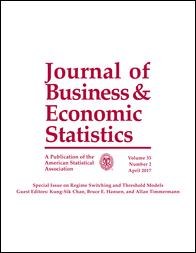
Almeida, C., Fan, J., Freire, G. and Tang, F. (2023). Can a Machine Correct Option Pricing Models? Journal of Business and Economic Statistics, 41(3):995--1009.
-
Affiliated author
-
Publication year2023
-
JournalJournal of Business and Economic Statistics
We introduce a novel two-step approach to predict implied volatility surfaces. Given any fitted parametric option pricing model, we train a feedforward neural network on the model-implied pricing errors to correct for mispricing and boost performance. Using a large dataset of S\&P 500 options, we test our nonparametric correction on several parametric models ranging from ad-hoc Black–Scholes to structural stochastic volatility models and demonstrate the boosted performance for each model. Out-of-sample prediction exercises in the cross-section and in the option panel show that machine-corrected models always outperform their respective original ones, often by a large extent. Our method is relatively indiscriminate, bringing pricing errors down to a similar magnitude regardless of the misspecification of the original parametric model. Even so, correcting models that are less misspecified usually leads to additional improvements in performance and also outperforms a neural network fitted directly to the implied volatility surface.